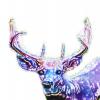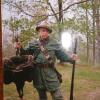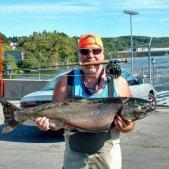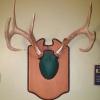Waterfowl Hunting Seasons Provide Diverse Opportunities across the State
New York State Department of Environmental Conservation (DEC) Acting Commissioner Marc Gerstman today announced that information is now available about the upcoming waterfowl hunting seasons, including season dates and updated regulations.
“New York’s unique configuration of waterfowl management zones provides hunters with open seasons in various parts of the state from September to April,” said Acting Commissioner Gerstman. “This year’s season selections were developed by a team of statewide DEC biologists, with input from waterfowl hunters. DEC has looked to task forces to help select waterfowl hunting season dates for more than a decade and appreciates all the help they have offered to help make these selections.”
The season dates and regulations can be viewed in full detail on the DEC website at 1-800-852-4897, or at 1-888-427-5447 (1-888-4 ASK HIP) or visit www.NY-HIP.com.
Hunting Safety:
Acting Commissioner Gerstman reminded hunters to follow simple safety guidelines and to use good judgment when choosing a time and place to hunt. Being considerate of other people enjoying the outdoors or who live nearby can help avoid potential conflicts and ensure a safe and enjoyable season. As coastal areas become more populated, new landowners unfamiliar with the safety, ethics and traditions of waterfowl hunting sometimes respond by seeking to limit hunter access to popular waterfowl hunting areas. Hunters should be considerate and try to minimize disturbance of local residents whenever possible. More information about avoiding conflicts between waterfowl hunters and waterfront property owners can be found atwww.dec.ny.gov/outdoor/94213.html.
Waterfowl Consumption Advisory:
The New York State Department of Health (DOH) evaluates data on chemicals in wild waterfowl to assess the possible effects of those chemicals on human health. The current advisory states that: "Mergansers are the most heavily contaminated waterfowl species and should not be eaten. Eat up to two meals per month of other wild waterfowl; you should skin them and remove all fat before cooking, and discard stuffing after cooking. Wood ducks and Canada geese are less contaminated than other wild waterfowl species and diving ducks are more contaminated than dabbler ducks.
Recent data indicate that waterfowl residing in the Hudson River between Hudson Falls and Troy have higher PCB levels than waterfowl from other portions of the Hudson River and are likely to have higher PCB levels than waterfowl from other areas of the state. To help reduce PCB exposures, you may want to harvest your waterfowl from other locations on the Hudson River or in other areas of New York State, particularly during the early season when many of the available birds are likely to be resident waterfowl (i.e., non-migratory). Because PCBs may have a greater effect on young children or an unborn child, it is particularly important for women under 50 and children under 15 to minimize their PCB exposures.
For the latest DOH advice on consumption of waterfowl or other game, please visit the Department of Health website at: www.health.ny.gov/environmental/outdoors/fish/health_advisories/advice_on_eating_game.htm.
Status of Highly Pathogenic Avian Influenza in NY Wild Birds:
To date, highly pathogenic avian influenza, which is of great concern to poultry producers across North America has not been found in wild birds in New York State. DEC and USDA staff will sample wild waterfowl this fall and winter in a continued monitoring program. Hunters are advised to practice good hygiene and take necessary precautions to minimize risks to themselves and their hunting dogs, such as: wear rubber gloves when cleaning game; wash hands with soap and water after handling game; disinfect utensils used to clean game; and dispose of carcasses in areas where domestic poultry will not come in contact with the remains. More information can be found at: www.aphis.usda.gov/publications/animal_health/2015/fsc_hpai_hunters.pdf
Habitat Stamp:
Acting Commissioner Gerstman also encouraged all outdoor enthusiasts to consider purchasing a Habitat/Access Stamp, an optional stamp that helps support DEC's efforts to conserve habitat and increase public access for fish and wildlife-related recreation. Buying a $5 stamp is a way to help conserve New York's fabulous wildlife heritage. More information about purchasing a Habitat Stamp is available at www.dec.ny.gov/permits/329.html.
For More Information:
New York’s 2015-2016 Waterfowl Hunting Seasons and Regulations brochure is available now on the DEC website and will be available from most license-issuing agents and DEC regional offices by early September.
For more information about waterfowl hunting in New York, including public hunting areas around the state, go to www.dec.ny.gov/outdoor/28175.html or contact any DEC wildlife office. Contact information for all regional offices can be found on the DEC website www.dec.ny.gov/about/558.html.








Recommended Comments
There are no comments to display.
Join the conversation
You can post now and register later. If you have an account, sign in now to post with your account.